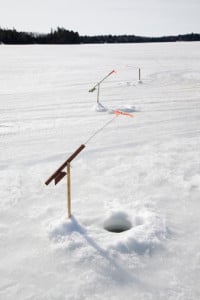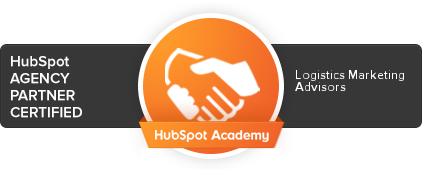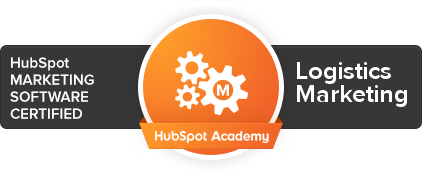The hazy summer heat has set in, so naturally all thoughts turn to… ice fishing.
Okay, I’ve gotten my seasons a little mixed up. But I recently drove by one of our many lakes here in Northwest Connecticut and I remembered a visit to the same lake this past March. That’s normally a time when New England begins to thaw out, but not this year. Walking around the lake that day, the temperature was in the mid-teens and the ice was still a good five inches thick. Good thing, too, because the lake was loaded with ice fishermen (and, to be fair, some women).
I decided to walk out on the ice to see what all the fuss was about. Having grown up in the Bronx, you can fit what I know about ice fishing on the head of a fish hook. But I was fairly confident I would see someone sitting or standing over a hole in the ice dropping a baited line into the water and waiting.
I was wrong.
 Instead I saw ice fisherman Bill sipping hot chocolate and walking back and forth between 5 or so ice fishing stations. Each station had what Bill called a “tip-up” – a type of fishing device rigged with a small flag that pops up when a fish takes the bait. Bill told me that lets him fish multiple holes at the same time, and also experiment with different baits at different depths. I love the tip-up strategy because it minimizes the bad part of fishing, the waiting, and maximizes the good part, the reeling in and eating.
Instead I saw ice fisherman Bill sipping hot chocolate and walking back and forth between 5 or so ice fishing stations. Each station had what Bill called a “tip-up” – a type of fishing device rigged with a small flag that pops up when a fish takes the bait. Bill told me that lets him fish multiple holes at the same time, and also experiment with different baits at different depths. I love the tip-up strategy because it minimizes the bad part of fishing, the waiting, and maximizes the good part, the reeling in and eating.
I think my ice fishing lesson provides a good metaphor for marketing of logistics services. Instead of worms, our bait is helpful content. Information that makes prospects smarter, or makes them think in a different way about a problem. Check out my article “Lead Generation for Logistics Services.”
People are searching the web for answers on a variety of logistics topics. For instance, there are about 70 monthly searches for “LTL shipping,” 170 monthly searches for “port logistics,” and 2400 monthly search for “reverse logistics.” A rich content piece related to topics such as these can lead prospects to your door.
Yes, there is work involved in content creation, just as there is work involved in setting up multiple fishing stations with “tip-up” devices. But once content is created, you can drop this “bait” in countless holes and move on to other things. Like fishing multiple holes at once, it’s automated and highly efficient at generating leads.
At the early stages of a long sales cycle, companies are not necessarily looking to talk to 3PLs or software companies or equipment providers. They are busy getting smarter – about the problem they need to solve and the different strategies available. That’s the point when you want to get noticed. That’s the point when your content is most relevant. Once companies are ready to talk to a short list of potential providers, that list is often already determined.
There’s no way of knowing exactly where prospects will be looking for information, so, like Bill, you should place your content in as many different places as you can – in blog posts, on Slideshare, on YouTube, and in the white paper and video libraries of the many logistics websites. These are just a few of the options. Once the prospect finds your content, a large part of Marketing’s work is done. It’s now up to your nurturing and sales process to reel them in.
Too often our marketing for logistics is overly focused on seeking out and catching the “big fish.” Your competitors are after those same prospects, and it’s pretty hard to get their attention. Why not take some of the money and energy you spend on selling to cold prospects and reinvest it in educating to identify warm prospects?
Those that find and download your helpful content are often companies trying to solve the very problem your content addresses. In that way, your content marketing strategy actually paves the way for far more productive sales discussions (don’t you love this marketing stuff?). It lets your salespeople do what they love and do best: solve problems.
So, a few takeaways from our ice fishing adventure:
Think twice before moving to Connecticut. It’s cold and the taxes are high.
Don’t create content if you have nothing to say. But don’t use lack of time as an excuse for not creating content. There are resources out there that can help.
Stop cold calling companies that don’t need your services or products. Instead, leverage content marketing to help companies with real problems find you.







